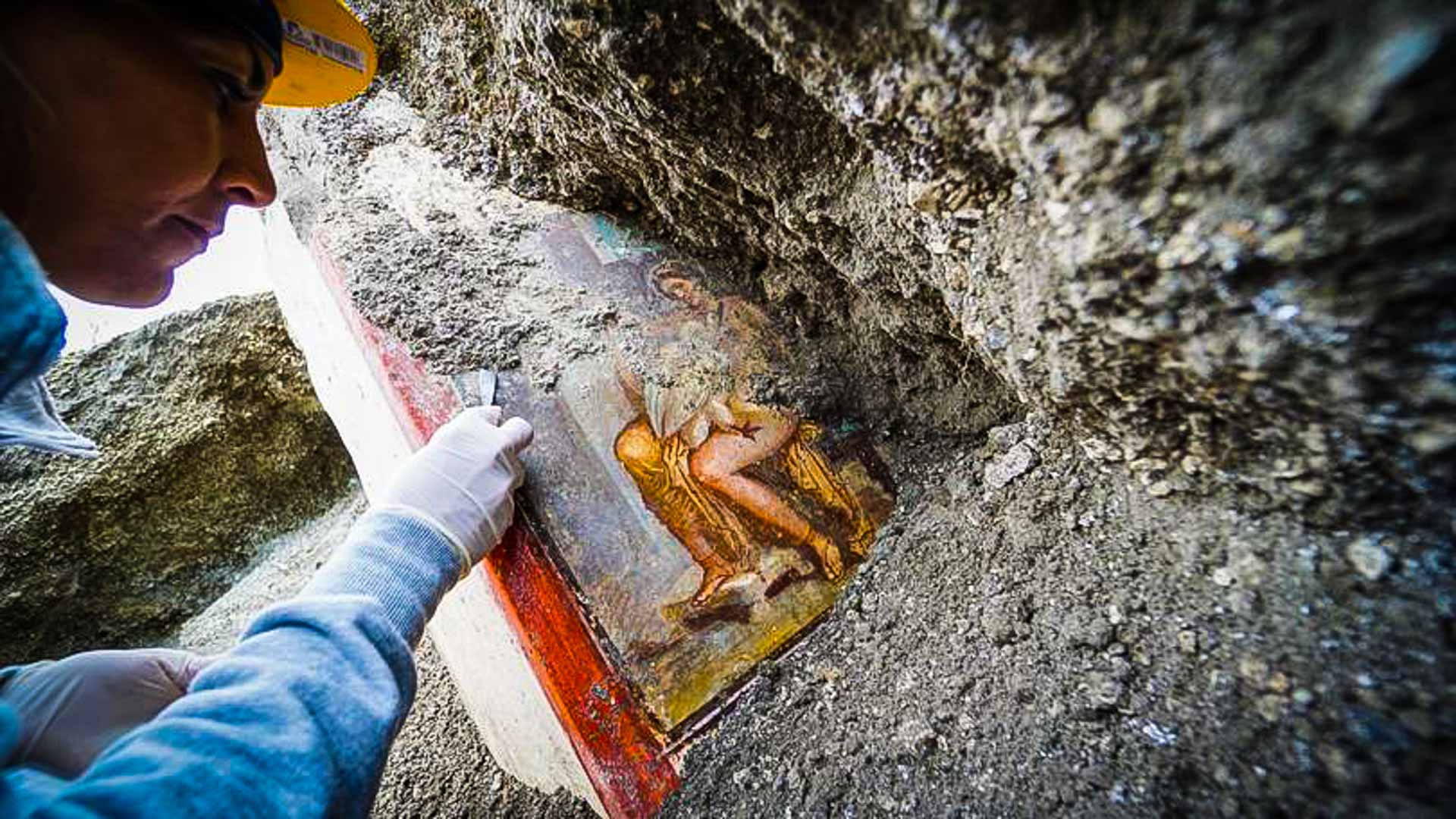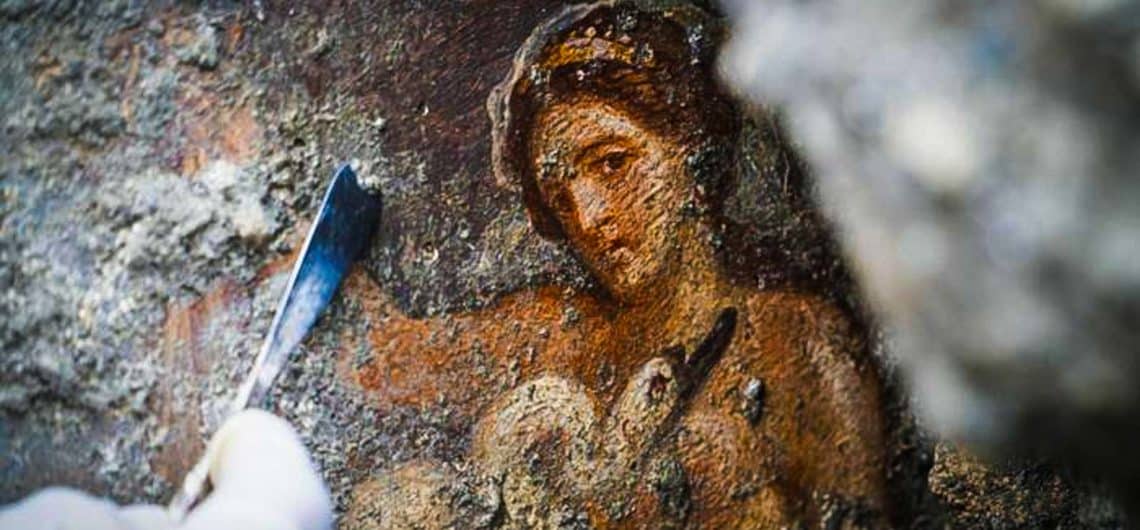Another extraordinary female image re-emerges in Pompeii during the new excavations of the Regio V. The myth of Leda and the swan depicted in a unique fresco has been indeed discovered during the stabilization and re-profiling of the excavation fronts, in a cubicle (bedroom) of a house along Via del Vesuvio. The painting, a triumph of sensuality, represents the junction between Zeus, transformed into a swan, and Leda, daughter of Thestios, the King of Pleuron and wife of Tyndareus king of Sparta.
According to the Greek myth, Zeus, in love with Leda, turned into a swan to mate with her on the banks of the Eurota river. In the same night she also laid with her husband Tyndareus. After these unions, from two giant eggs were born the Dioscuri (Castor and Pollux) and Helen (future wife of Menelaus king of Sparta) and Clytemnestra (bride and assassin of Agamemnon king of Argos and brother of Menelaus).
An “exceptional and unique” finding explains Massimo Osanna, director of the Archaeological Site of Pompeii, because the reference to this Greek myth had never been found “with this decidedly sensual iconography, which seems to look at the sculptural model of Timothy“, an important Greek sculptor of the IV century BC. A licentious portrait, explicit and very sensual, rich in colours and shades that underline its very high executive quality, with Leda’s oblique glance that seems to meet the eyes of those entering the room. The house where this incredible fresco has been found, is the same where the painting of the Priapus, in the act of weighing the great phallus, had already been uncovered. Probably the dwelling of a rich merchant, perhaps a former freedman, anxious to elevate his status with reference to the myths of the highest culture.
The fresco of Leda and the swan is added to the previous findings of the figure of Venus and Adonis from the “House with garden” and the refined frescoes of women painted in some rooms along via del Vesuvio and is part of the Great Pompeii Project for the restoration of the Archaeological Site that are being carried out in the Royal V of the Roman city.


Comments